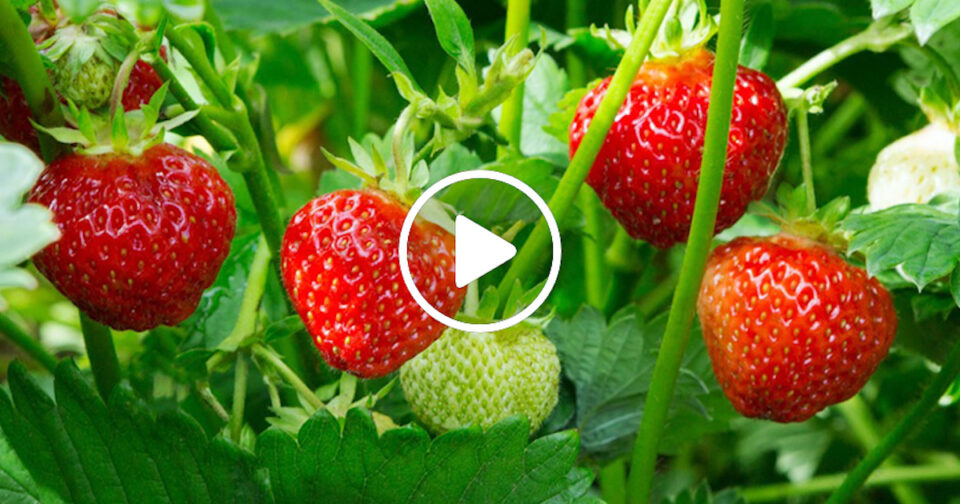When cultivated in containers, any type of strawberry can produce fruit. June-blooming strawberries will produce a single primary crop in early summer, lasting around two weeks. And, unlike June-bearing strawberries, both day-neutral everbearing strawberries have a longer season.

Day-neutral plants produce berries on a sporadic basis throughout the summer, whereas everbearing strawberries yield two to three harvests per season.
Everbearing strawberries, on the other hand, yield smaller fruit and fewer runners than other types.
Whatever option you choose, make sure you acquire the correct container size because they all require various container sizes.
Follow these instructions for growing strawberries in pots to maximize your chances of a successful harvest.
Strawberries can be started from bare-root crowns or transplants. Transplants will seem lush and attractive in containers right once, but dormant bare-root crowns will take a while to develop and generate leaves.

Plant only three strawberry plants per square foot of soil because strawberry plants dislike being crowded. Because their roots are shallow, measure the container’s surface area (as long as the container doesn’t taper sharply) to calculate the area.
Fill the container with a loose, loamy potting mix that will hold moisture while allowing excess water to drain fast. Use a container that has a drainage hole in the bottom.
Plant the strawberry plants so that the crowns (where the stem meets the roots) are visible above the soil level.

Make a small mound of potting soil and spread the roots out over it. Then, up to the crown, cover the roots with potting mix and thoroughly moisten the soil.
After the soil settles from watering, add extra potting mix as needed, but don’t cover the crown with the soil.
To ensure a plentiful supply of flowers and fruits, place the pot in an area that receives at least eight to twelve hours of sun each day.
If just one direction of light is available, rotate the container every three to four days to ensure that the plants grow equally.

Make sure the plants are also well-protected. Even though the strawberries are in pots, bugs can still get to them. Insects, birds, and rodents will still be drawn to your plants, so use netting or a fence to keep them safe.
Water your strawberries once or twice a week, or anytime the soil gets dry approximately 1 inch below the surface. The plants should not be submerged in water or have wet soil.

To give the optimal environment for fruits to form, keep the soil slightly damp—not dry or waterlogged. The soil in containers dries out faster than soil on the ground in general. Long periods of hot, dry weather may demand watering twice daily.
Supplemental feeding is beneficial to most container plants. Use a balanced liquid fertilizer every three to four weeks to feed your strawberries.
Apply a balanced fertilizer in the fall as well, since the plants will begin to generate perennating buds within the crown that will produce flowers and fruit the next year.

When strawberries are allowed to fall dormant in the winter, they produce the most fruit. However, in colder climates, the roots may freeze, and some containers may shatter if left outside in freezing conditions.
For winter storage, you can place your containers in an unheated garage or beneath a deck. Only water when the soil is completely dry. You might also be able to mulch around the container and leave it alone.

Whether it is a specialized strawberry pot, a hanging basket, or a planter, use a container with good drainage. Either several drainage holes at the bottom of the container or multiple holes throughout the container will do.
Strawberries have a relatively small root ball and can be grown in containers as small as 10 to 12 inches in diameter and 8 inches deep.
However, the smaller the container, the more frequently you will need to water it. If you want to grow June-bearing strawberries, it’s best to plant them in a wood-framed raised bed rather than a pot.

Moreover, synthetic pots and light-colored pots will keep the roots cooler than dark colors and natural materials that conduct heat, such as clay and metal.
Strawberry plants dislike ᴇxᴛʀᴇᴍᴇly hot temperatures, so opt for light-colored containers if you live in a hot climate.
PLEASE WATCH THE VIDEO BElOW:
